Do you have a potted basil plant that has suddenly taken a turn for the worse? Don’t worry – this is something that can often happen to herbs grown in pots. There are a variety of causes behind why your basil might be wilting, but luckily there are also ways to restore it back to health! Whether you’ve got an indoor or outdoor herb garden, understanding the potential issues with your beloved Basil and learning how to give it the attention it needs will go a long way towards keeping it thriving. In this blog post, we’ll discuss one of the most common reasons why Basil plants wilt and explore some tips on how you can get yours flourishing again.
What Causes Basil to Wilting?
Basil wilts for many reasons, including over-watering, insufficient light and nutrition, too much heat or cold, or even disease. Improper watering is the most common culprit of basil wilting. When the soil stays wet too long it causes the roots to rot. On the other hand, if you don’t water enough your basil can become dry and start wilting. Basil needs 6-8 hours of sun a day to thrive so if your plant isn’t getting enough sunlight this will also lead to wilting. Basil plants need a balanced fertilizer every two weeks during its active growing season in order to get enough nutrients for healthy growth and vitality. Too much or not enough fertilizer can also cause wilt.
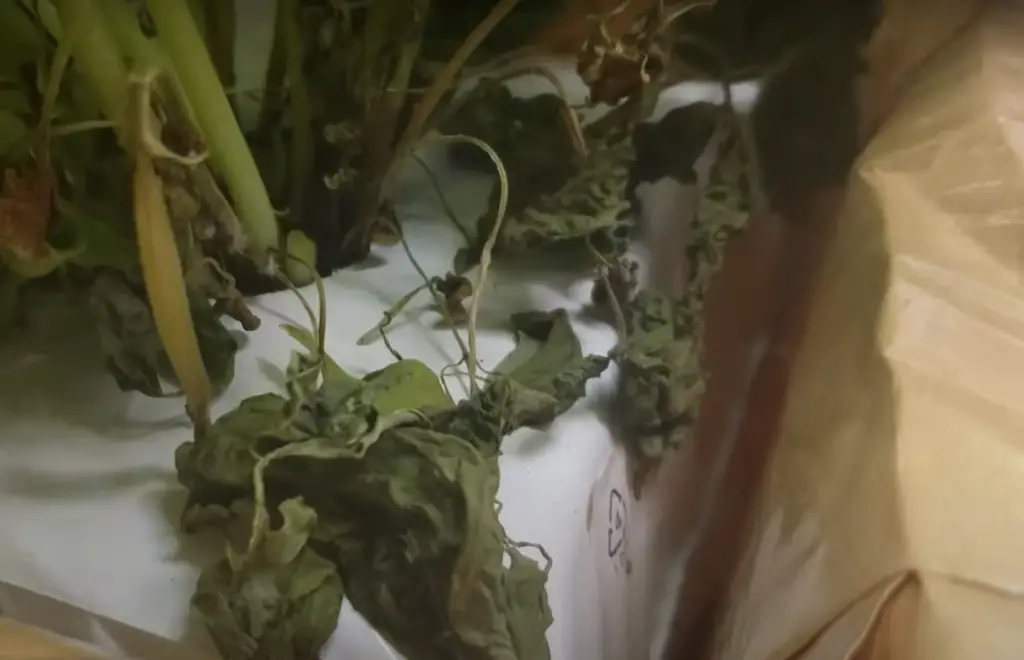
Extreme temperatures are another common cause of basil wilting. When the temperature gets too hot or too cold, the leaves start to droop and become limp. Lastly, diseases can also be a factor in wilting Basil. Most of the usual causes of plant diseases are downy mildew and soil-borne fungi like Pythium spp. and Fusarium oxysporum which lead to root rot.
To avoid wilting, make sure to give your basil plenty of light (6-8 hours), proper watering, fertilization, and warmth. Keep an eye on your plant for any signs of disease as well. Knowing what causes basil to wilt is key to preventing it from happening in the first place! With the right care and attention, you can keep your basil green and healthy for a long time. [1]
Environmental Factors to Consider
When diagnosing why your basil is wilting, it’s important to consider environmental factors such as light, water, and temperature. Basil needs at least six hours of direct sunlight each day and soil that is moist but not soggy; overwatering can cause the leaves to droop and turn yellow.
Additionally, make sure that your soil has good drainage so that excess water doesn’t build up around the roots of the plant. It’s also important to provide adequate airflow by ensuring that there is some space between plants in the same pot or garden bed.
Finally, try to keep your basil away from areas that are too windy, as this can also lead to wilting. If you live in an area with frequent heat waves or heavy rains, be sure to keep an eye on the plant and adjust watering accordingly. With proper maintenance and care, your basil should stay healthy and full of flavor!
How to Revive a Wilted Basil Plant
If you’ve noticed your basil plant wilting, it might be time to take action. Wilted basil plants are usually caused by too little water or heat stress. Luckily, with a few simple steps, you can revive your basil and get it growing again.
First, check the soil for moisture. If the soil is dry, give your basil a good drink of water. Make sure you are using room temperature water as cold water can shock the plant and cause additional damage. You want to make sure that the entire root system gets wet so that all parts of the plant will receive adequate hydration. For best results, let the water sink in before adding more.
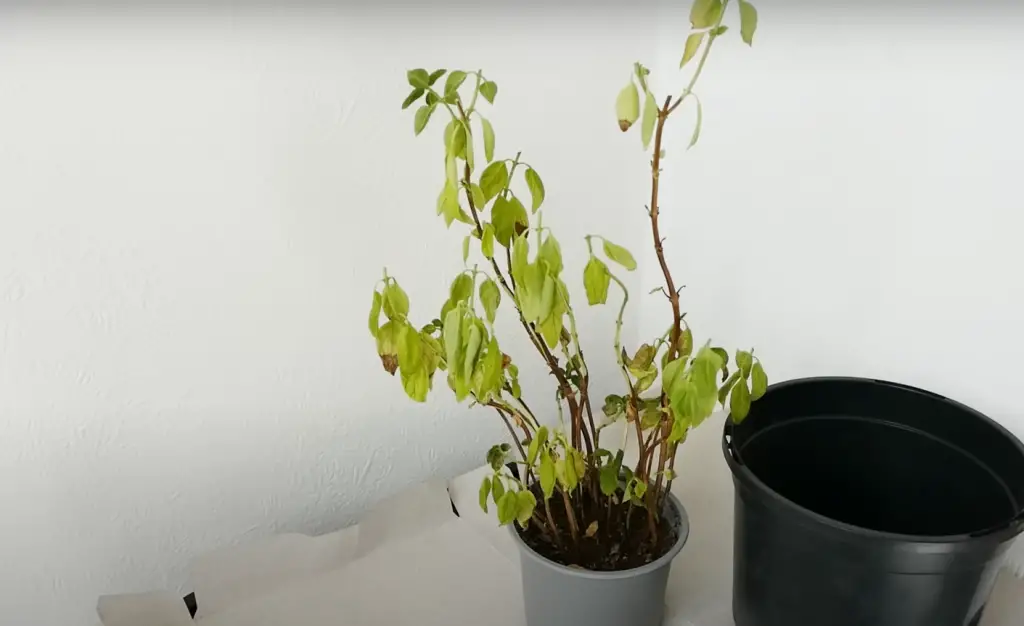
Next, move your basil away from direct sunlight. If the basil is in a window or outside, find a spot that receives filtered indirect light instead of being hit with full sun rays. You can also help create more shade by adding a sheer curtain to the window or using an umbrella outdoors.
Finally, fertilize your plant every once in a while. This will help give it all the nutrients needed to stay healthy and vibrant. A balanced fertilizer specifically for edible plants is ideal but you could use other types of fertilizer if necessary. Just make sure you follow all label instructions carefully as too much fertilizer can be damaging to your plant.
Following these simple steps should get your wilted basil back on track in no time! With proper care and attention, you’ll be able to enjoy a lush and flourishing basil plant. [2]
Preventative Measures for Keeping Your Basil Healthy
Basil is a hardy herb and usually requires minimal maintenance to stay healthy, but certain measures can be taken to ensure that your basil stays in top condition. Here are some tips for keeping your basil lush:
- Provide the plant with lots of sunlight – 6-8 hours of direct sunlight every day is ideal. Basil loves sunny locations and will start to wilt if it doesn’t get enough light.
- Ensure that the soil remains moist at all times, but not soggy; overwatering can cause root rot and eventually lead to wilting. Water your plant thoroughly about once a week or less depending on how dry the soil is at any given time.
- Prune the plant regularly to encourage new growth. Trim yellowed leaves and shoots that are growing too quickly, as this will help keep your basil looking its best.
- Check for pests regularly. Whiteflies, aphids, and spider mites can all cause problems for your plant in the long run if not caught early on. Use an insecticidal soap or neem oil to treat any infestations you find.
- Feed the plant every few weeks with a liquid fertilizer to ensure that it gets all the nutrients it needs to stay healthy and happy.
Following these steps should ensure that your basil stays strong and healthy throughout the season! It’s also important to remember that some wilting of plants is normal; even though we don’t like it, it’s just part of the natural cycle. With these tips, however, you can make sure that your basil stays healthy and vibrant for as long as possible!
Troubleshooting Common Issues with Basil Plants
Basil is a popular herb used in many dishes, but despite its popularity it can sometimes be tricky to keep alive. If your basil plant is wilting or dying, there are a few common causes that you should investigate. Common reasons why your basil may be wilting include:
- Not enough sunlight – Basil plants need plenty of direct sunlight to thrive, so make sure you’re placing yours in an area where they get at least 6 hours of direct sun per day. Move it to a sunnier spot if necessary. [3]
- Over-watering – Basil plants should be watered when the top 1 inch of soil feels dry to the touch. Be careful not to overwater as this could cause the roots to rot, leading to wilting and death.
- Poor soil – Basil plants require well-draining soil with a pH of 6.5-7.0, so make sure yours is in an appropriate potting mix or garden bed. Adding compost can help improve drainage if needed.
- Pests – Aphids, beetles, and mealybugs can all infest basil plants and cause wilting leaves as they feed on them. If you suspect your plant is dealing with a pest issue, inspect it closely for signs of bugs and treat accordingly using a safe insecticide.

By troubleshooting these common issues, you should be able to identify why your basil plant is wilting and take steps to prevent further damage.
How Often Do You Water Basil?
When caring for basil, overwatering is the main culprit of wilting. Basil should be watered deeply and infrequently – this means that the soil should be allowed to dry out in between waterings. Depending on your environment, watering once every 5-7 days may suffice. It’s best to check the soil with your finger to see if it’s dry before adding more water. Be sure not to let the plant stand in standing water or overly wet soil as this can result in root rot or other fungal diseases. If you are constantly finding yourself having to water your basil more than once a week, consider increasing drainage by adding organic matter like compost or perlite to the potting mix. [4]
Additionally, placing a layer of mulch on top of the soil can help to retain moisture while also preventing evaporation.
Can Basil Get Too Much Sun?
Yes, basil can get too much sun. When exposed to too much hot direct sunlight, basil leaves may droop and turn yellow. This is known as “sun scalding” or “sunburn” and it can kill the plant if left unchecked. To prevent this from occurring, ensure that your basil plants are receiving filtered sunlight – either in a spot that receives morning sun or in a partly shaded area of your garden. If you grow basil indoors, place it near an east- or west-facing window where the light is not too strong. Also make sure to water when needed, as prolonged dryness can lead to wilting leaves as well.
Lastly, do not forget to provide adequate air circulation around the plant. This can help prevent diseases and other issues that could be causing your basil to wilt. Since this is a tender herb, it’s best to keep the temperature between 65-75°F and humidity levels between 40-60%. With proper care and attention, you can ensure that your basil stays healthy and vibrant year round!
Is It Easy To Overwater Basil?
Yes, it is very easy to overwater basil. Basil prefers moist but not wet soil and requires well-draining soil to prevent root rot. Overwatering can cause wilting and yellowing of the leaves due to a lack of oxygen reaching the roots. If your basil plants are wilting, check the soil’s moisture level before watering again. The best way to determine if your basil needs more water is by sticking your finger into the soil; if it feels dry two knuckles deep then you should add some water. Be sure to use filtered water or aged tap water as chlorinated tap water may burn the plant’s leaves.
How Do I Know If My Basil Needs More Water?
If you’ve been regularly watering your basil, it may be time to start examining the soil. Basil needs well-draining soil that’s kept evenly moist. To check if your plant needs more water, stick your finger into the soil. If it feels dry up to your knuckle, then it’s time to add more water. Also make sure that drainage for the pot is good and that there is no standing water around or in the pot itself after watering. [5]
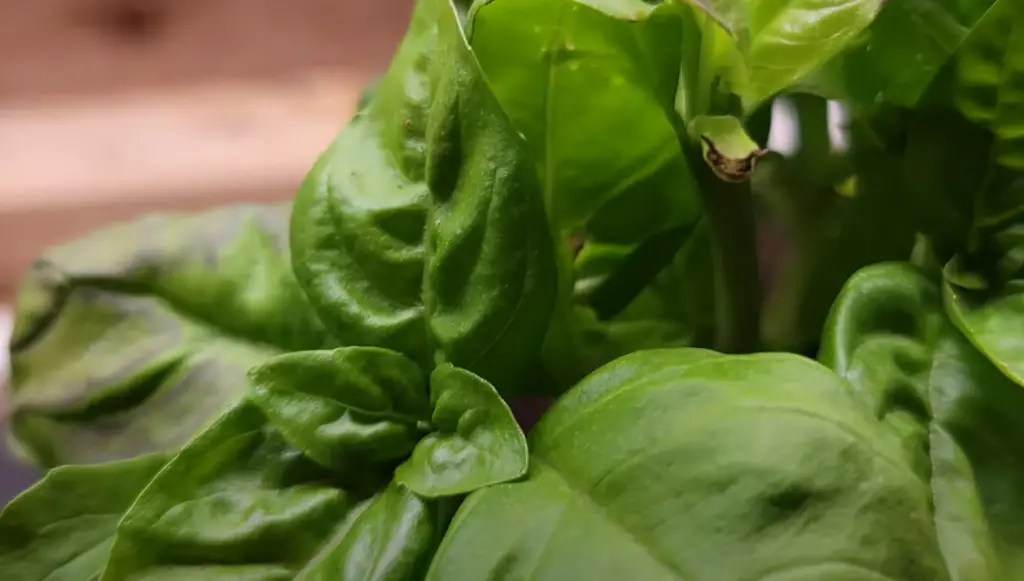
In addition, pay attention to any signs of wilting on the leaves and stems. If they are drooping or yellowing, this could be a sign that something is wrong with the plant’s environment—it could mean that either the soil is too dry, or it could be that the basil is getting too much water.
If your basil has been wilting in spite of regular watering and you don’t observe any other signs of disease, then it’s likely just not getting enough water. To help revive your plant, increase the amount of water you give it as well as make sure to check on the soil moisture regularly. With proper care and attention, you can have a healthy basil plant again in no time!
What Temperature Is Bad For Basil?
Basil does not like extreme temperatures. If the temperature is too cold or too hot, your basil plant may wilt.
Temperatures outside of this range can cause stress to the plant and result in wilting or death. Additionally, if you are growing basil indoors be sure to keep it away from radiators, fans, and air conditioners as these can create sudden fluctuations in temperature that may cause harm to your basil plants.Finally, make sure to keep an eye on local weather reports to ensure that you are adequately prepared for any drastic shifts in temperatures. By taking proper precautions, you can help protect your basil plants from extreme temperatures and keep them healthy. [6]
Can Basil Survive Extreme Heat?
Basil is an herb that thrives in warm conditions, so it can withstand mild heat waves. However, extreme temperatures are another story. When exposed to extreme heat (like over 100°F) for extended periods of time, basil will suffer wilting and eventual death. This is because its leaves are not able to transpire enough water to cool its surface and maintain normal temperature levels. If you’re growing basil in a region with high temperatures during the summer months, consider providing shade or taking steps to insulate your plants from the sun’s intense rays. Of course, make sure you provide adequate watering as well! Taking these measures can help keep your basil healthy during hot spells and prevent it from wilting due to extreme heat.
How Long Do Basil Plants Live?
Basil plants generally have a life span of one growing season. When the temperatures begin to drop below 55°F, basil will start to wilt and eventually die off for the winter. With proper care and attention, however, it is possible to extend the life of your basil plants by several weeks or even months. When temperatures dip below freezing, basil plants may need to be brought indoors in order to survive. It’s also important to make sure that the soil is moist but not soggy so that the roots can take up enough water without drowning. Additionally, fertilizing your basil occasionally with a diluted liquid fertilizer can help promote healthy growth and prolong its lifespan.
Different varieties may have differing tolerance for cooler temperatures, giving you a longer growing period before the plant needs to be brought indoors or dies off for the winter.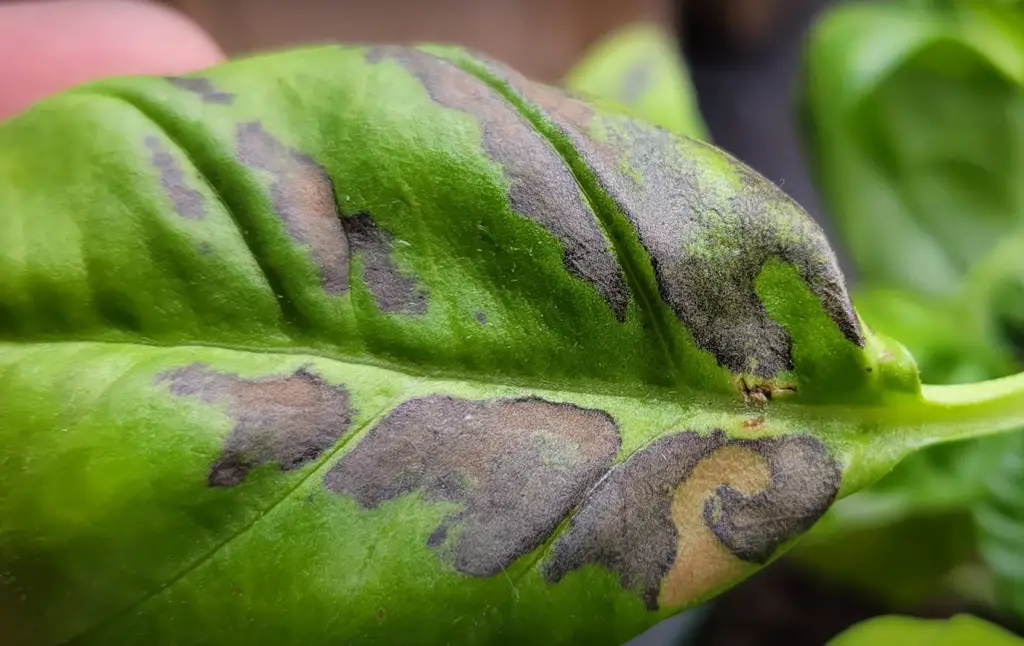
Overall, proper care and attentive monitoring of your basil plants can help extend their lifespan by several weeks or months. With extra precautions such as fertilizer and planting multiple varieties, you may even extend it further! To ensure that your plants stay healthy and productive for as long as possible, make sure to monitor soil moisture levels and provide a warm environment when needed. [7]
FAQ
How do you revive wilted basil leaves?
The best way to revive wilted basil leaves is to submerge the leaves in a bowl of cold water for 30 minutes. For severely wilted basil, you may need to repeat this process multiple times. Additionally, make sure to check for signs of root rot or other underlying issues and treat accordingly.
What causes my basil to wilt?
Basil can wilt due to environmental stressors such as too little sunlight, dry soil, excessive heat or cold temperatures. Other possible causes include nutrient deficiencies, overwatering, root rot and pests like aphids and mites.
How do I prevent my basil from wilting?
To prevent your basil from wilting, be sure to provide it with adequate amounts of water, light, and nutrients. Water your basil plants regularly, enough to keep the soil moist but not soggy. Basil prefers full sun exposure for at least 6 hours per day; if this isn’t possible, provide some artificial lighting. Make sure your basil is planted in well-draining soil that contains organic matter or compost for nutrients. Also consider applying a foliar spray such as fish emulsion or seaweed fertilizer once a month for an extra boost of nutrition. Lastly, prune off any dead leaves or flowers to prevent disease and allow air circulation around the plant. With these simple measures, you can help ensure that your basil plants stay healthy!
What does overwatered basil look like?
Wilted basil leaves are a common sign of overwatering. The leaves will become soft and droop, often turning yellow or brown in color. In extreme cases, the entire plant may begin to rot from the bottom up as a result of root rot caused by too much moisture in the soil. Additionally, fungal diseases like powdery mildew can occur due to high levels of humidity and poor air circulation around the plant.
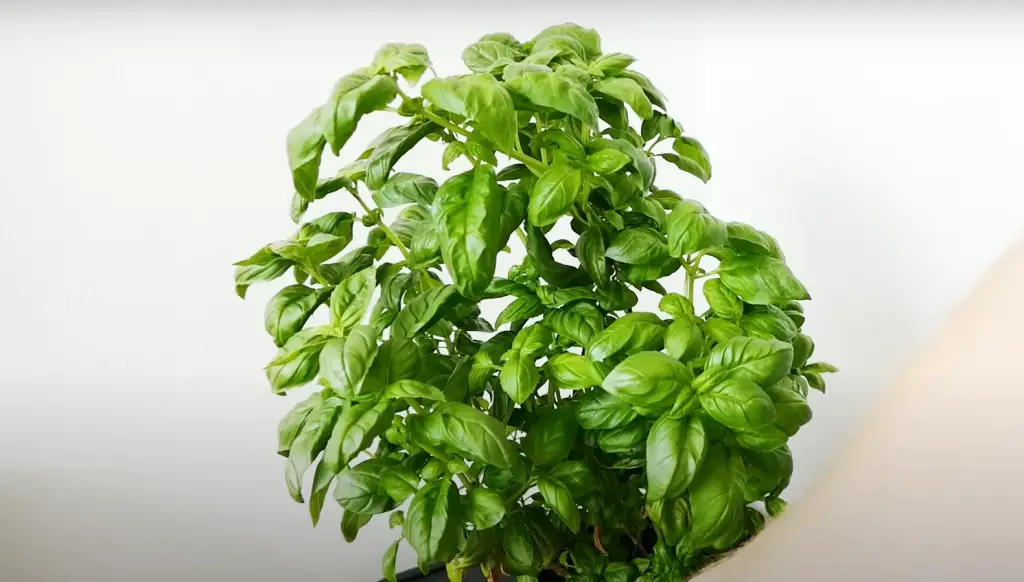
If you suspect that your basil is being overwatered, it’s important to take action quickly to save your beloved herb! There are several steps you can take to revive an overwatered basil plant. First, let the soil dry out completely between waterings and ensure that there is adequate drainage in the pot or garden bed. If necessary, you can also repot the plant into a container with better drainage. Additionally, try to avoid splashing water on the leaves when watering and make sure that the plant is in an area with good air circulation. Finally, check for signs of pests or diseases and treat accordingly if needed. With these few simple steps, your basil should be back to its healthy self in no time!
Will basil grow all year indoors?
The answer to this question depends on your environment. Basil is a tropical plant and does best in warm, humid climates with plenty of sunlight. It can be grown indoors all year round if you can provide the right conditions for it. You should make sure that your basil plant gets at least 6 hours of direct sunlight each day, either from natural light or artificial lighting sources. If possible, try to keep the temperature in the room between 65-75°F (18-24°C). Additionally, regular misting or placing your pot on a tray filled with water combined with pebbles can help provide humidity for the plant. Finally, maintain moist soil but do not overwater as too much water can lead to wilting and root rot. With a bit of effort and the right conditions, your basil plant can survive indoors all year round.
Does fresh basil grow back?
Yes, fresh basil can grow back after wilting. When the leaves are damaged due to disease or pests, it is best to remove them and allow new growth to start over. To encourage this regrowth, make sure you provide your basil with adequate sunlight, water, and nutrients. Additionally, trim off any dead or dying stems at their base to help promote healthy new growth.
What kills basil plants?
Basil plants can be killed by a number of different issues, some of which are more common than others. Common causes of basil wilting include overwatering, underwatering, lack of light or too much light, pests and diseases, excessive heat or cold temperatures, and nutrient deficiencies.

Overwatering is one of the most common reasons for basil wilting because it can cause root rot. Too much water can also prevent oxygen from reaching the roots. Underwatering can also cause wilting as the plant will not receive enough moisture to survive. Basil needs at least 6 hours of sunlight per day in order to thrive so if this is lacking then it may wilt. Pests such as aphids, caterpillars and whiteflies can also damage the plant and cause wilting. Diseases such as powdery mildew, root rot or virus infections may also be to blame. Finally, extreme temperatures, either too hot or too cold, can cause basil plants to wilt. Too much fertilizer or a lack of essential nutrients such as magnesium and calcium may also contribute to wilting.
Useful Video: How To Save A Basil Plant (With Time Lapse)
Conclusion
If you’ve determined that your basil is wilting due to a lack of water, the best course of action is to increase watering but not overdo it. Make sure your soil is always moist, but never soggy or overly saturated. You may also need to add some organic matter to the soil to help retain moisture better and improve drainage if necessary. If there are other environmental factors causing the wilting, then adjusting the temperature, light levels, or humidity should do the trick. If all else fails, start again with fresh seeds or transplants from a nursery and try to replicate the conditions that were favorable for healthy growth in your first attempt. With proper care and attention, you’ll be able to keep your basil plants thriving for years to come.
References:
- https://www.gardenerreport.com/basil-plant-wilting/
- https://www.gardenerbasics.com/blog/basil-leaves-wilting
- https://www.homesandgardens.com/gardens/why-is-my-basil-wilting
- https://kitchenherbography.com/basil-plant-wilting/
- https://www.gardeningknowhow.com/edible/herbs/basil/fix-droopy-basil-plants.htm
- https://www.gardenanswers.com/herbs/drooping-basil-indoors/
- https://savvygardening.com/how-often-to-water-basil/





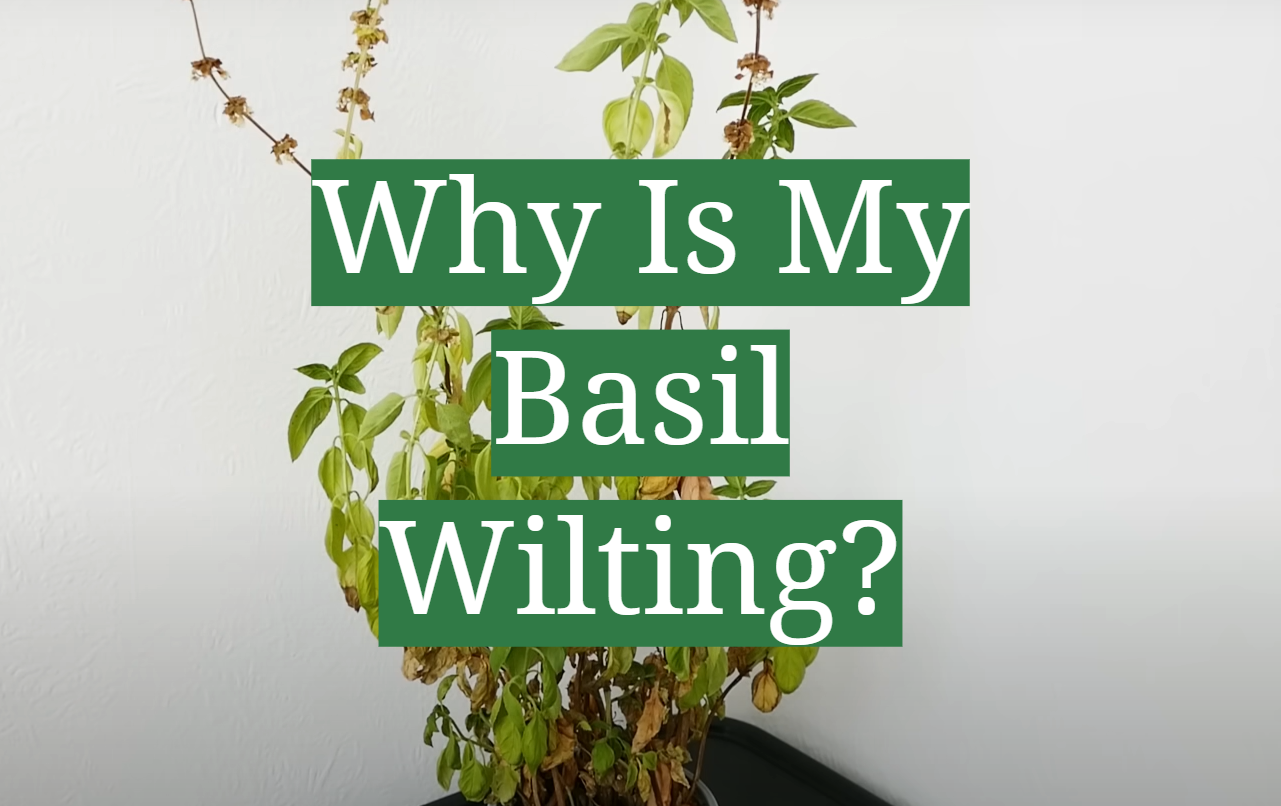




Leave a Reply
View Comments